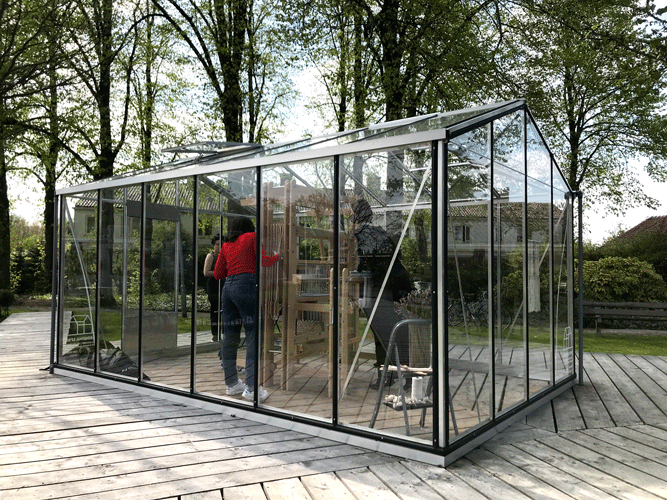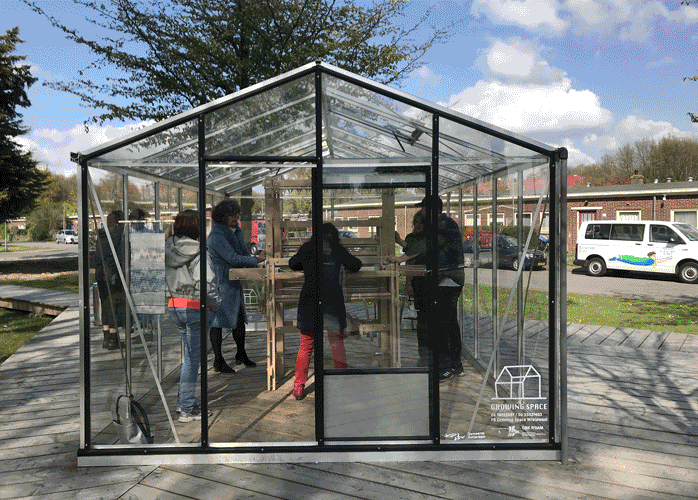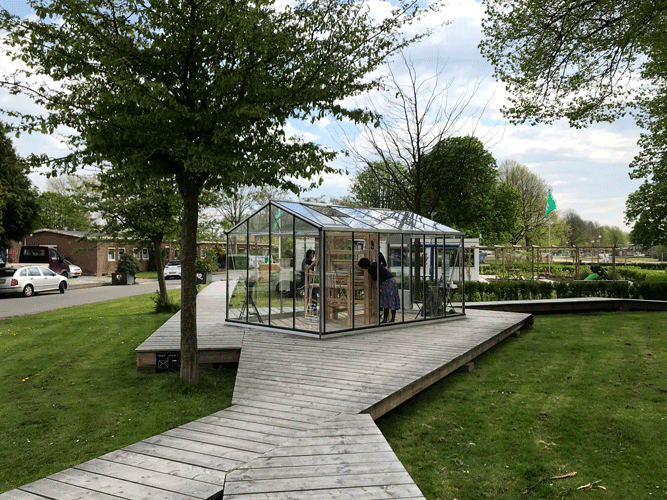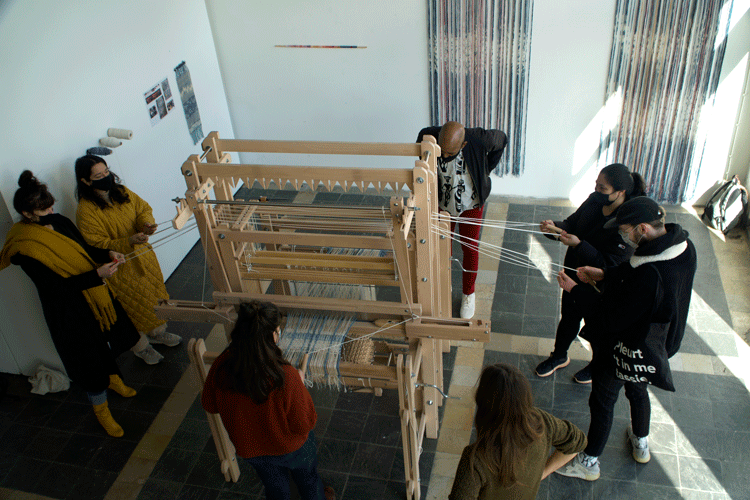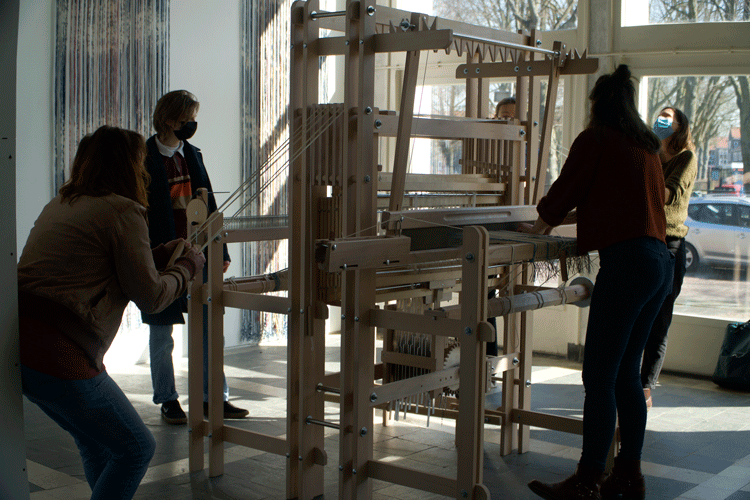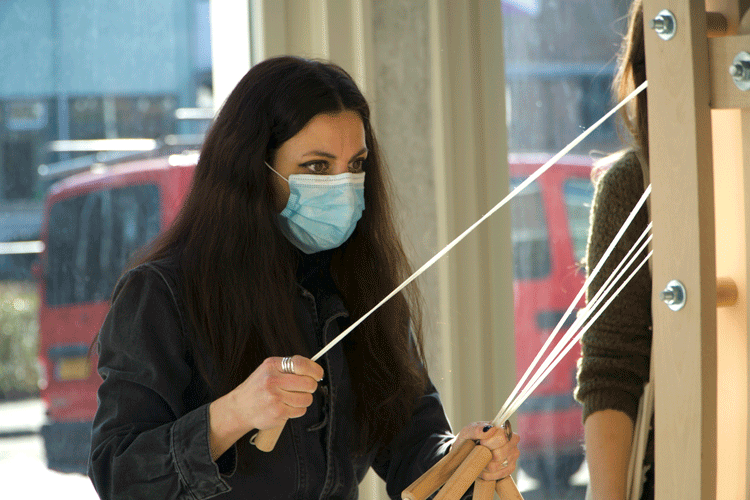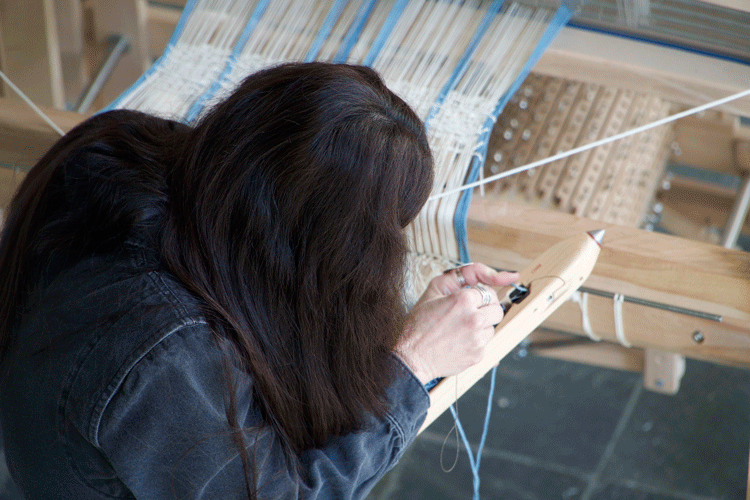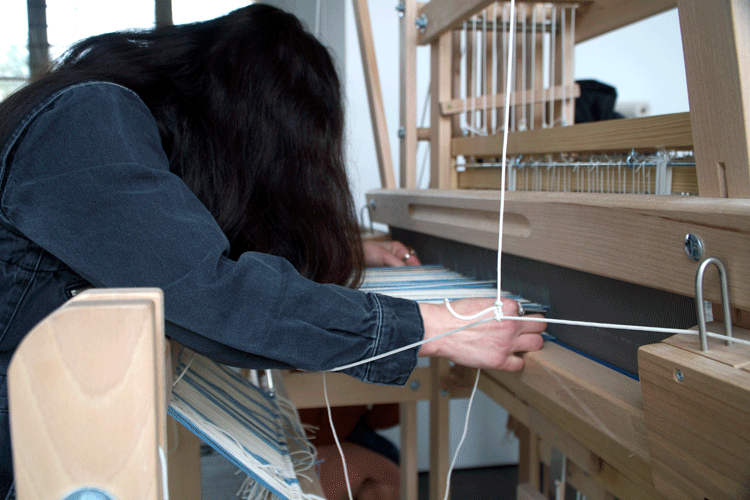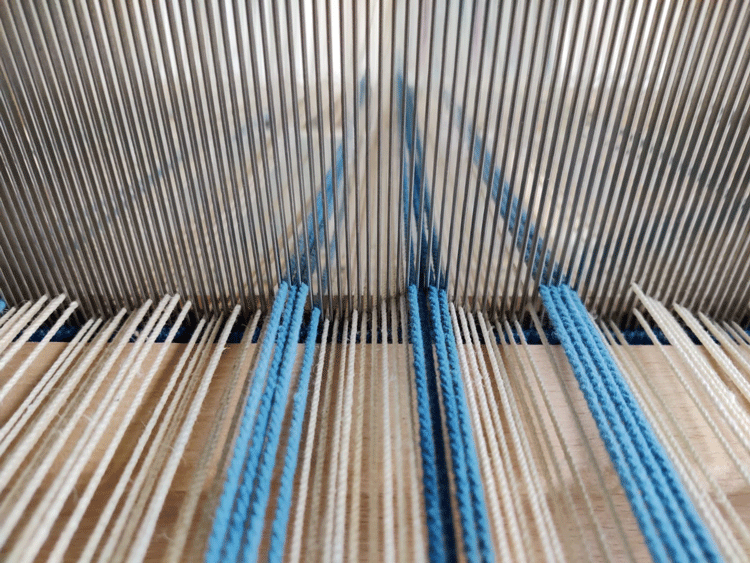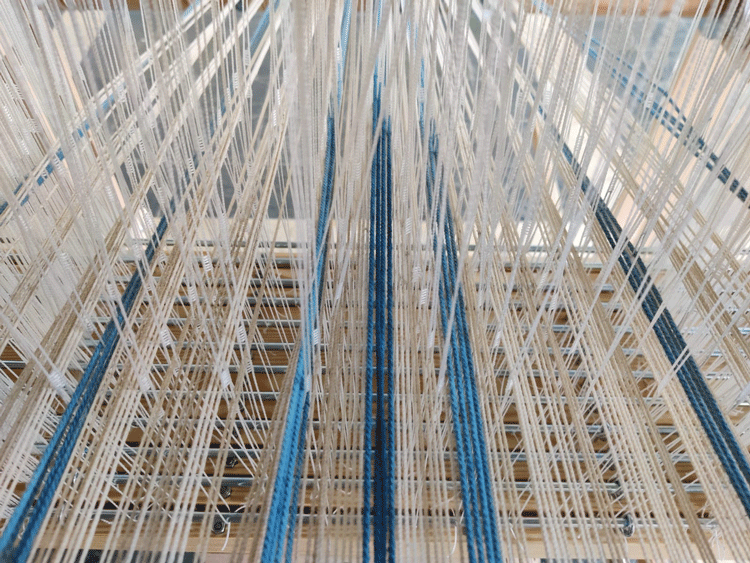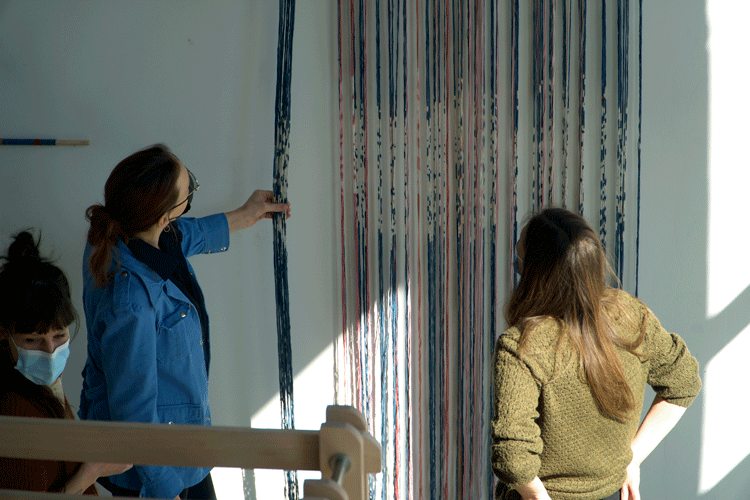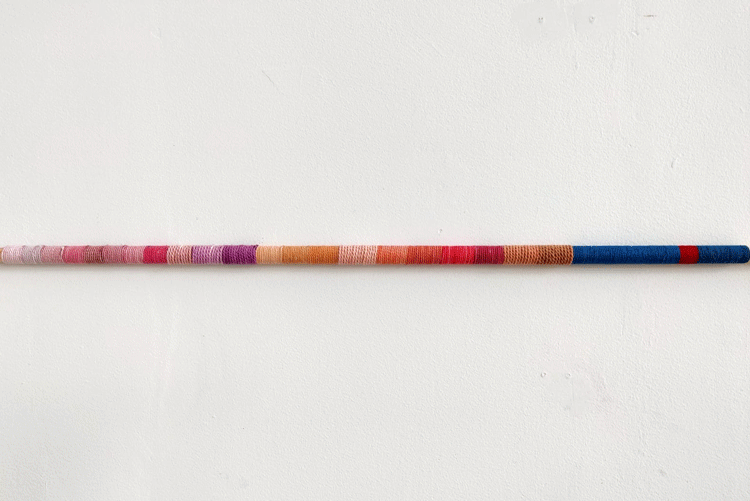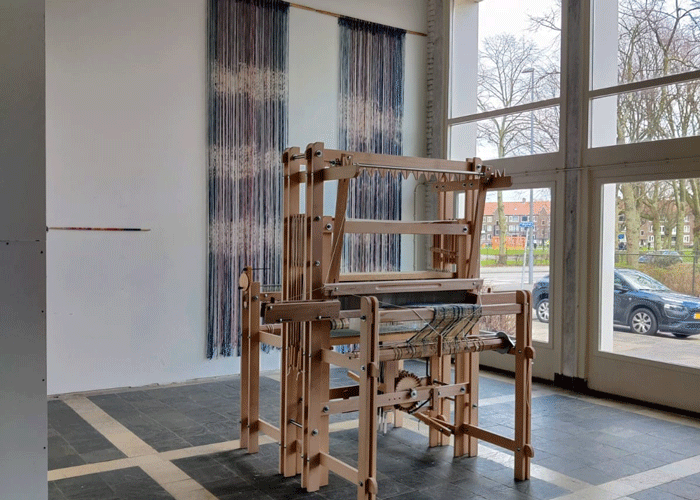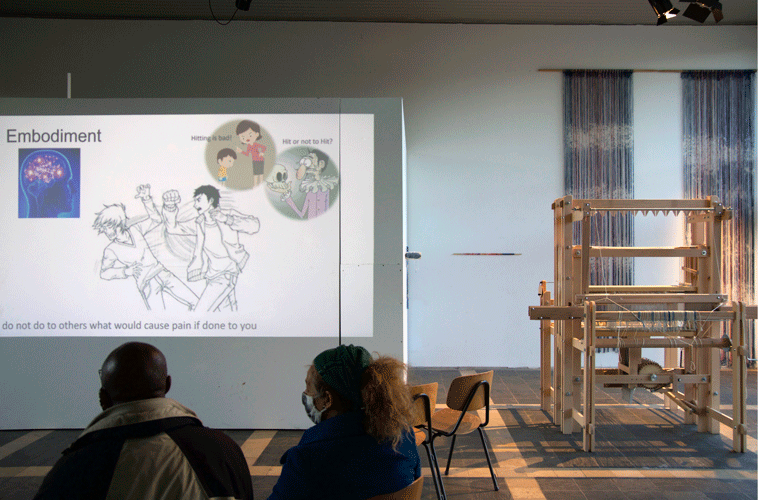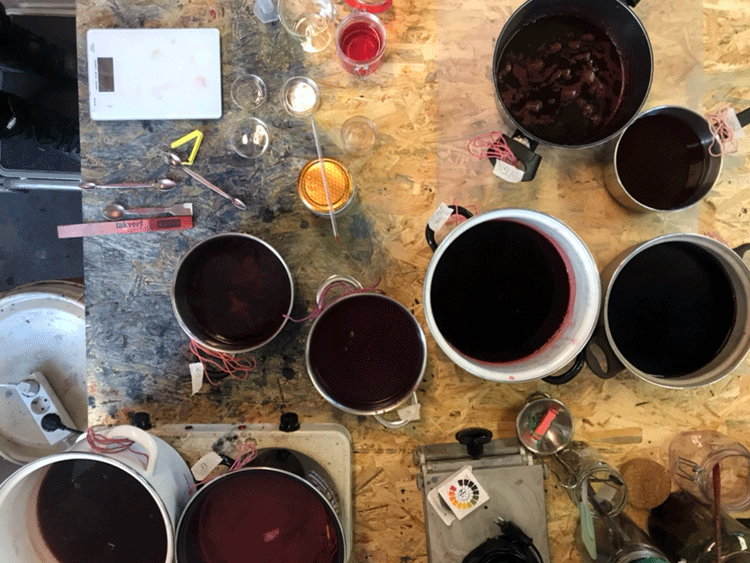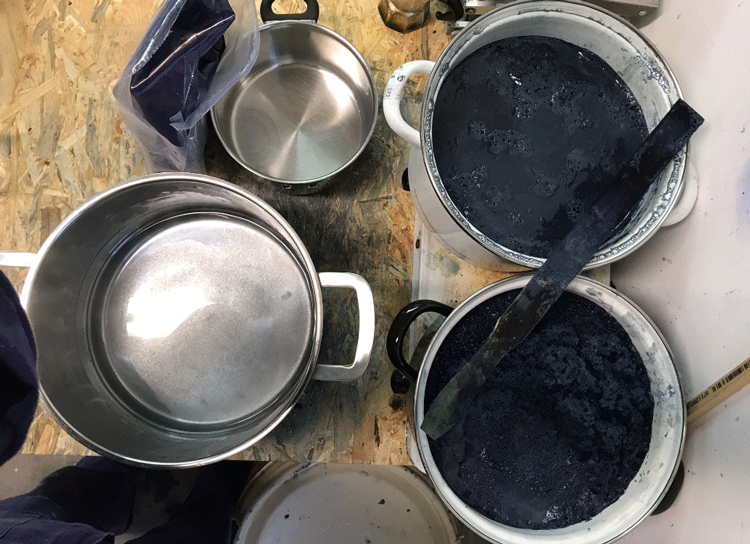Social Interactions Beyond Consciousness Lab & Collective Loom Project
Social Interactions Beyond Consciousness Lab & Collective Loom Project
Associate Professor Valeria Gazzola and I developed the on going research project “Social Interactions Beyond Consciousness Lab”. It concerns a series of experiments in which we investigated the effect of “social distancing” on the movement and empathy of people. The aim of the project is to demonstrate how visible and invisible phenomena can influence group dynamics. As an extension of this research project, I developed “The Collective Loom Project” in which the data from the above experiments are converted into tapestry. The project consists of a loom in which 4 to 8 people can simultaneously weave on the loom. The ‘brain’ of the loom is a cylinder with pins that functions as an analogic computer and in which the empathy data are processed. The weaving machine is operated by numerous participants, normally unknown to each other, that have to collaborate in order to weave. This is a learning process during which the empathic mechanism is activated and will gradually affect the appearance of the fabric too. With this I refer to the complexity of human behavioral patterns and how people become interwoven in each other's processes.
This project was also inspired by C. Keysers research on empathy: whenever we learn something new the empathic mechanism is activated in our brain. This is explained Hebb’s plasticity theory in which he demonstrated how the extreme plasticity of our brain enables our neural circuits to adapt to constant changing environments.
This interdisciplinary experimental collaboration suggests “a new value” that originates from a new culture collaboration of the artist and scientists involved and the audiences who engage with the work. In particular, it highlights the emergence of a “new space” at the intersection of art and science in the public or semi-public domain. Both artist and scientists are focusing on different approaches that would contribute to this experimental study.
Follow us on Facebook:https://www.facebook.com/Social-Interactions-Beyond-Consciousness-101988...
This project is realised with the help of Mondriaan Fund, Charlois Speciaal and the Institute for Neuroscience in Amsterdam
Special Thanks to Valeria Gazzola, Celia Gavanozi, Segio Carrera, Camilo Andres Rojas Cifuentes, Sandra Zrnic, Despina Papachristoudi, Jan Van den Bossche, Tess Van Wijnen, Ernst Walgenbach
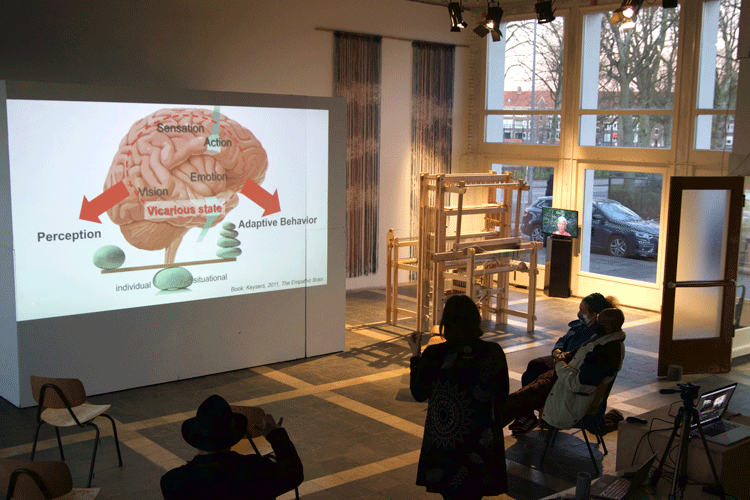
Empathy is defined as the ability to understand and share the feelings of others (Zaki,& amp; Ochsner, 2012). This understanding and sharing can happen by two complementary ways.
We can use cognition, our ability to think and reasons about the state of another individual, to take other individual’s perspective and understand how they feel. Or we can use what is called “embodiment”, our ability to use our bodily experiences slip into the body of other people and interpret their bodily expressions ‘from within’: we feel the other person is distressed because the other’s facial expression is similar to what I would generate when I’m distressed, and the same brain regions that are active when I’m distressed, will become active again when I see other individuals being distressed [Keysers, Kaas and Gazzola 2010]. While cognitive empathy more strongly relies on language and requires the awareness that the emotional state that the other is showing is not our own, embody empathy does not need language, relies on our senses, does not necessarily requires awareness and even functions in animals [Atsak 2011].
Research shows that individuals might adjust their body movement based on a non - verbal empathic communication between them and others (Sevdalis, & Keller, 2012). Embodied empathy is thought to also make used of this non-verbal communication, by directly mirroring or mimicking the state of the other person.
Mimicry and embodied empathy, although not necessarily happening with individuals being aware of them, could be modulated by several factors. For instance in-group members
are more attuned to each others than out-group members, believes, sense of responsibility, motivation etc are all factors that can change how much we non-verbally and automatically
perceive and respond to the state of other individuals. Mindsets - frames of mind that orient individuals to make sense of complex information by offering them simple schematics about
themselves and objects in their world (Crum, Salovey, & Achor, 2013) – might also affect mimicry and embodied empathy.
